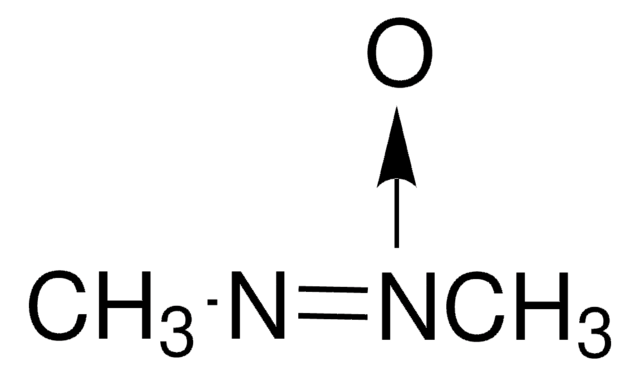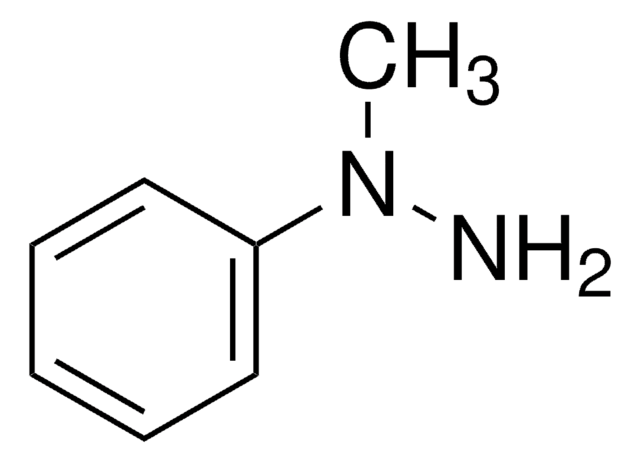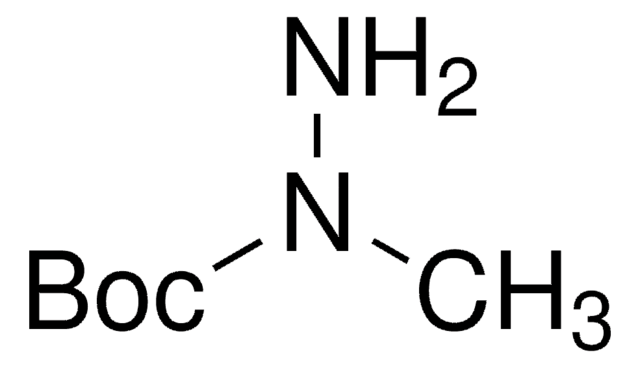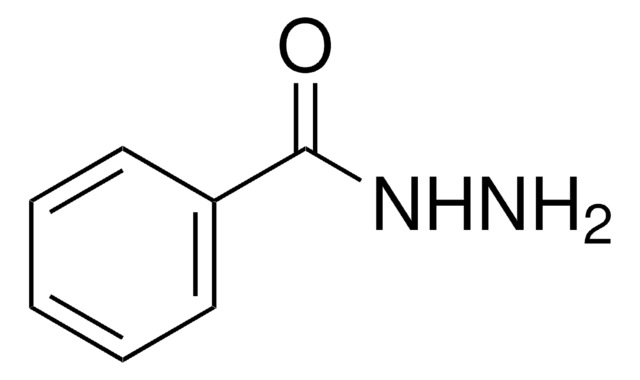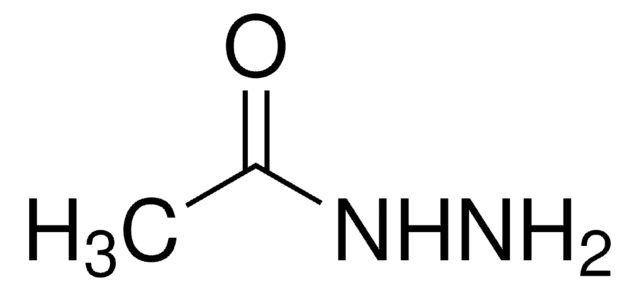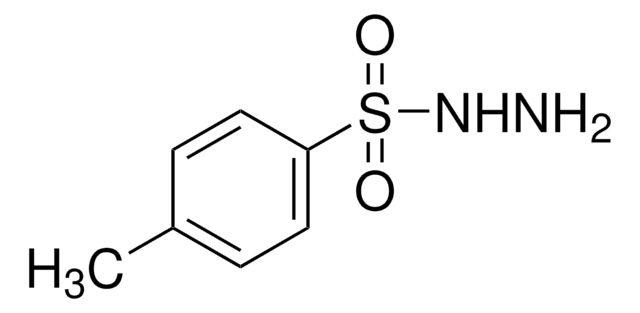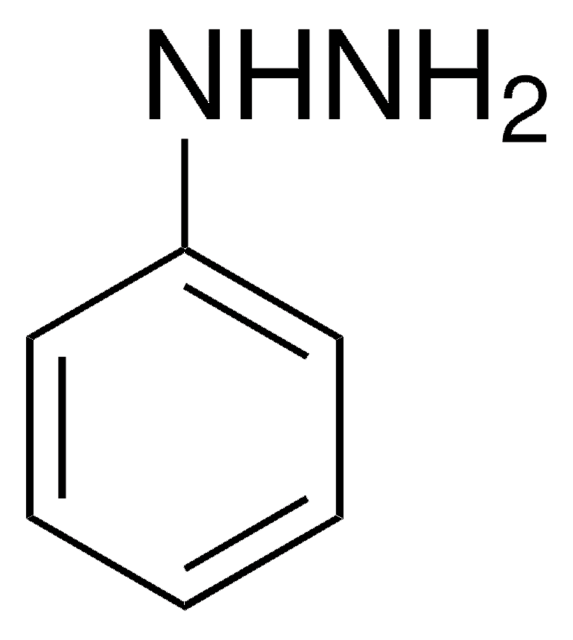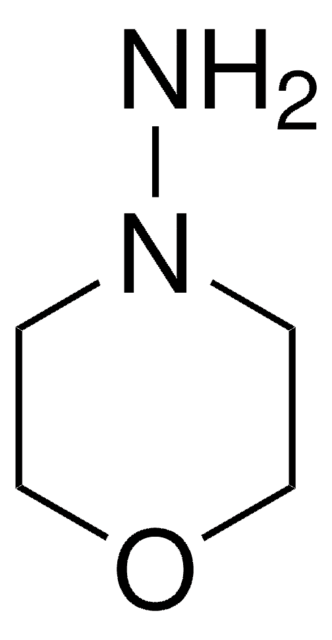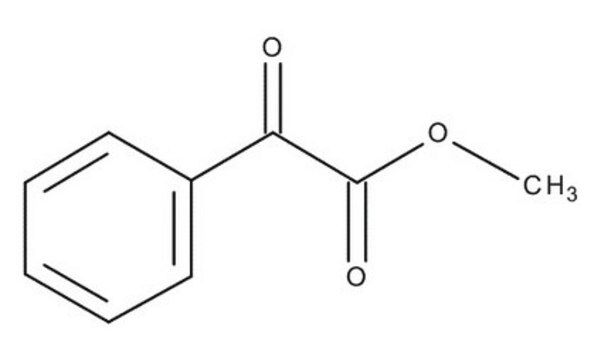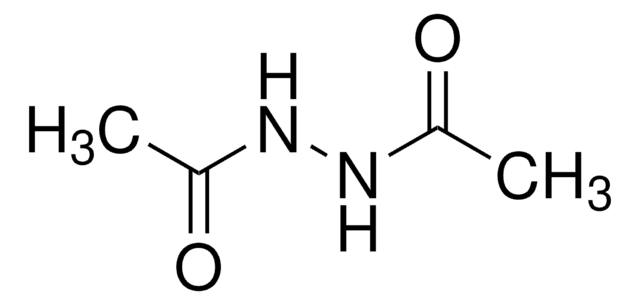D161608
N,N-Dimethylhydrazine
98%
Sinónimos:
asym-Dimethylhydrazine
About This Item
Productos recomendados
densidad de vapor
1.94 (vs air)
presión de vapor
103 mmHg ( 20 °C)
Ensayo
98%
Formulario
liquid
temp. de autoignición
478 °F
lim. expl.
95 %
índice de refracción
n20/D 1.4075 (lit.)
bp
60-62 °C (lit.)
densidad
0.79 g/mL at 20 °C (lit.)
temp. de almacenamiento
2-8°C
cadena SMILES
CN(C)N
InChI
1S/C2H8N2/c1-4(2)3/h3H2,1-2H3
Clave InChI
RHUYHJGZWVXEHW-UHFFFAOYSA-N
¿Está buscando productos similares? Visita Guía de comparación de productos
Aplicación
- β-Naphthol via radical amination to form 1-amino-2-naphthol.
- 2-Chloro- and 2,2-dichloro-(bromo)vinyl ketones via regioselective heterocyclization to form 3-substituted 1-methyl(5-halo)pyrazoles.
- Terminal alkynes in the presence of TpRuCl(PPh3)2 (Tp = tris(pyrazolyl)borate) to form nitriles.
N,N-Dimethylhydrazine along with ferric chloride hexahydrate forms an effective reduction system for:
- Synthesizing DNA binding pyrrolo[2,1-c][1,4]benzodiazepine (PBD) imines via reductive cyclization of the corresponding nitro aldehyde.
- Transforming a variety of nitroarenes and azido compounds into the corresponding anilines and amino compounds, respectively.
Acciones bioquímicas o fisiológicas
Palabra de señalización
Danger
Frases de peligro
Consejos de prudencia
Clasificaciones de peligro
Acute Tox. 3 Dermal - Acute Tox. 3 Inhalation - Acute Tox. 3 Oral - Aquatic Chronic 2 - Carc. 1B - Eye Dam. 1 - Flam. Liq. 2 - Skin Corr. 1B - STOT SE 3
Órganos de actuación
Respiratory system
Código de clase de almacenamiento
3 - Flammable liquids
Clase de riesgo para el agua (WGK)
WGK 3
Punto de inflamabilidad (°F)
14.0 °F - closed cup
Punto de inflamabilidad (°C)
-10 °C - closed cup
Equipo de protección personal
Faceshields, Gloves, Goggles
Listados normativos
Los listados normativos se proporcionan para los productos químicos principalmente. Para los productos no químicos sólo se puede proporcionar información limitada. Si no hay ninguna entrada, significa que ninguno de los componentes está en la lista. Es obligación del usuario garantizar el uso seguro y legal del producto.
EU REACH Annex XVII (Restriction List)
Elija entre una de las versiones más recientes:
¿Ya tiene este producto?
Encuentre la documentación para los productos que ha comprado recientemente en la Biblioteca de documentos.
Los clientes también vieron
Artículos
Carcinogenesis and Epigenetics
Nuestro equipo de científicos tiene experiencia en todas las áreas de investigación: Ciencias de la vida, Ciencia de los materiales, Síntesis química, Cromatografía, Analítica y muchas otras.
Póngase en contacto con el Servicio técnico
